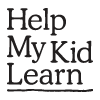What to do with this activity?
When talking with your child, notice the shapes around you. Do you see any circles, squares, rectangles or triangles? For instance, you could point out that doors are rectangular and so is the TV set.
Draw a circle, square, rectangle or triangle - it doesn't have to be perfect. Then encourage your child to have a go at tracing over the shape, either with a coloured pencil, or with their pointing finger. Talk about the shape you are drawing together, and how you can tell which shape it is. For instance, triangles have three sides, while squares and rectangles have four sides. Circles don't have corners at all.
If you have an android smart phone (any smart phone that is not an i-phone) you can download a free app "Baby Shapes and Colors" to play with your child. Play it with your toddler and talk about the choices you make.
Rate this activity
![]()
![]()
![]()
![]()
![]()
Based on 32 reviews
How would you rate it?
1 = Poor, 5 = Great.



